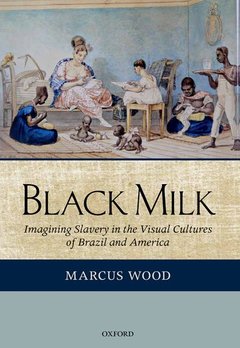Black Milk Imagining Slavery in the Visual Cultures of Brazil and America
Langue : Anglais
Auteur : Wood Marcus

Black Milk is the first in-depth analysis of the visual archives that effloresced around slavery in Brazil and North America in the eighteenth and nineteenth centuries. In its latter stages the book also explores the ways in which the museum cultures of North America and Brazil have constructed slavery over the last hundred years. These institutional legacies emerge as startlingly different from each other at almost every level. Working through comparative close readings of a myriad art objects - including prints, photographs, oil paintings, watercolours, sculptures, ceramics, and a host of ephemera - Black Milk celebrates just how radically alternative Brazilian artistic responses to Atlantic slavery were. Despite its longevity and vastness, Brazilian slavery as a cultural phenomenon has remained hugely neglected, in both academic and popular studies, particularly when compared to North American slavery. Consequently much of Black Milk is devoted to uncovering, celebrating, and explaining the hidden treasury of visual material generated by artists working in Brazil when they came to record and imaginatively reconstruct their slave inheritance. There are painters of genius (most significantly Jean Baptiste Debret), printmakers (discussion is focussed on Angelo Agostini the 'Brazilian Daumier') and some of the greatest photographers of the nineteenth century, lead by Augusto Stahl. The radical alterity of the Brazilian materials is revealed by comparing them at every stage with a series of related but fascinatingly and often shockingly dissimilar North American works of art. Black Milk is a mould-breaking study, a bold comparative analysis of the visual arts and archives generated by slavery within the two biggest and most important slave holding nations of the Atlantic Diaspora.
Introduction. 1. Slavery and the Romantic Sketch: Brazilian cornucopia, American aporia. 2. Slavery, American Graphic Culture and Print Satire. 3. Angelo Agostini and Brazilian Graphic satires of slavery. 4. Photography and slavery in America and Brazil. 5. Abstraction or Immersion? American Museums and the representation of slavery and trauma. 6. Brazil, Slavery and the limits of institutional display from Lina Bo Bardi to Escrava Anastacia.
Marcus Wood is a painter, performance artist, film maker, and a Professor of English at the University of Sussex. For the last thirty years he has been writing books and making art about the ways in which the traumatic memory of slavery and colonisation has been encoded across the cultures of the slave Diaspora. His books include Blind Memory Slavery and Visual Representation in England and America (Manchester UP and Routledge, 2000) and The Horrible Gift of Freedom Atlantic Slavery and the Representation of Emancipation (University of Georgia Press, 2010). He is currently finishing two books: Exploding Archives: Meditations on the Living Legacies of Slavery in Brazil and America and Slavery and Literary Sensibility in Brazil and America 1850-2000. His film 'Stick', which features the adventures of a giant hockey stick as it moves through various sacred spaces of Hindu culture in India, has just been released, and he is working on a film of the life of Henry Box Brown.
Date de parution : 05-2013
Ouvrage de 552 p.
16.2x24 cm
© 2024 LAVOISIER S.A.S.



